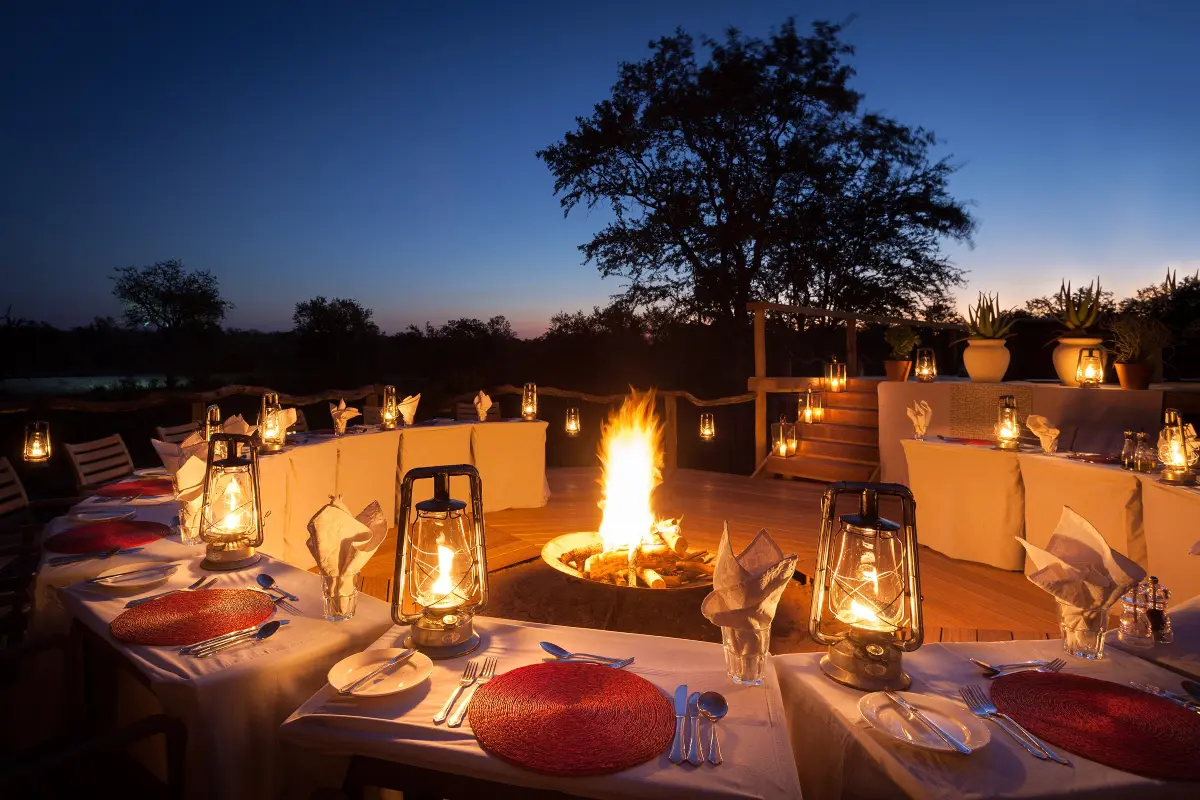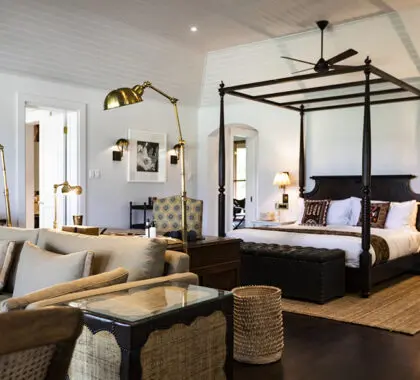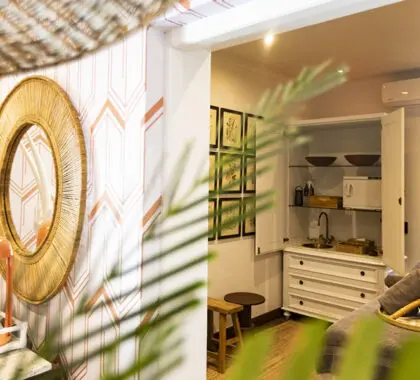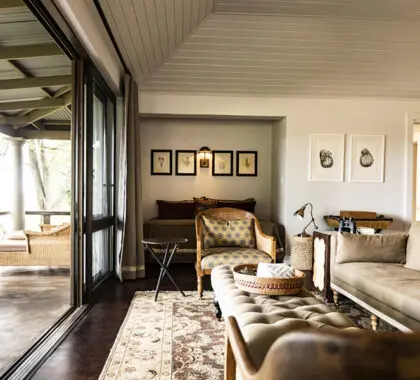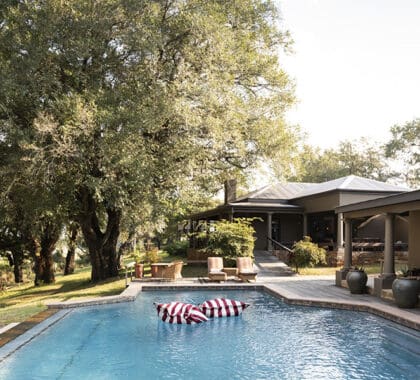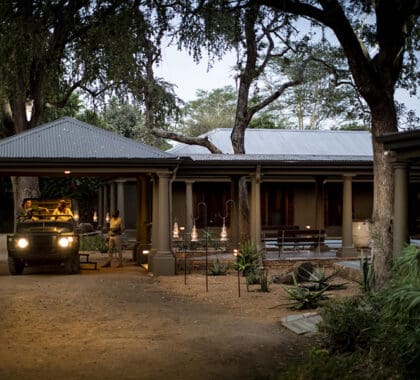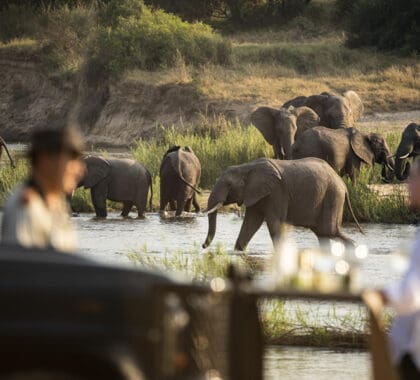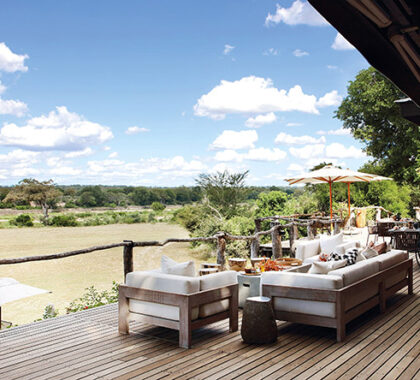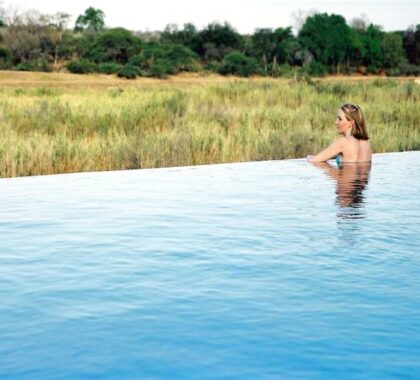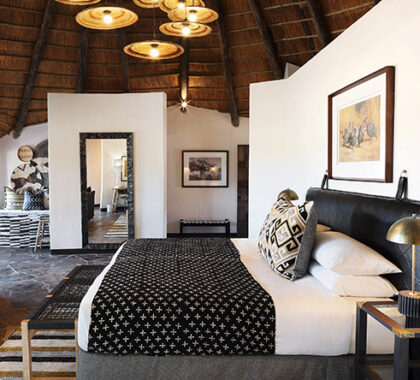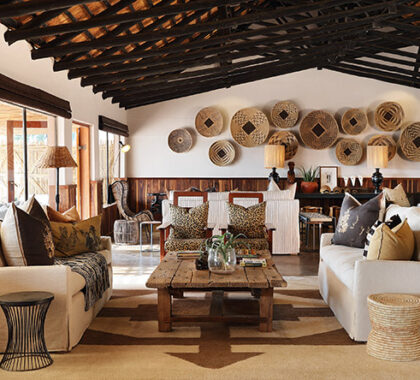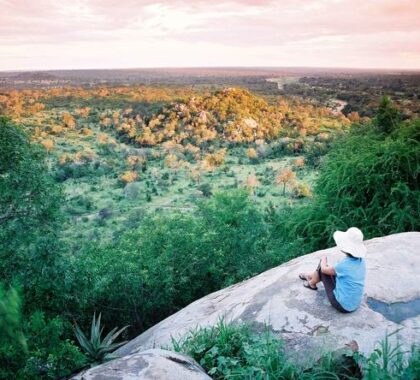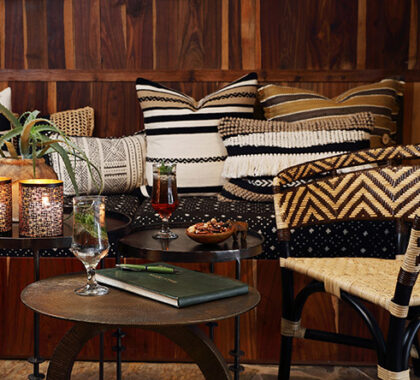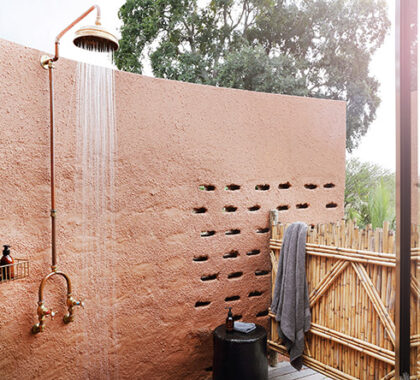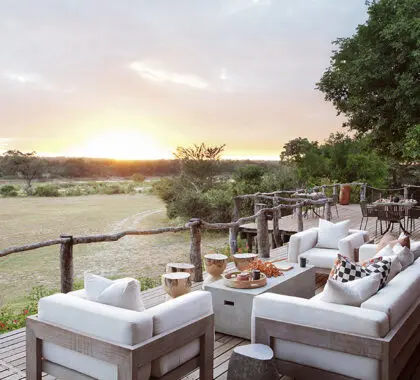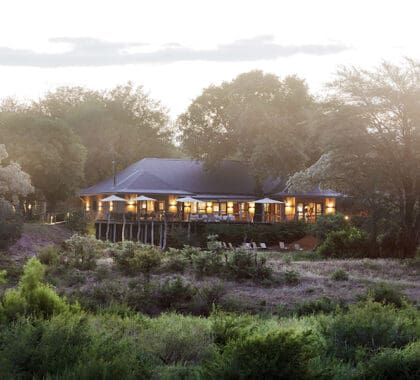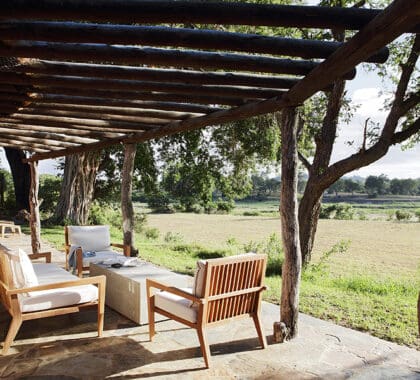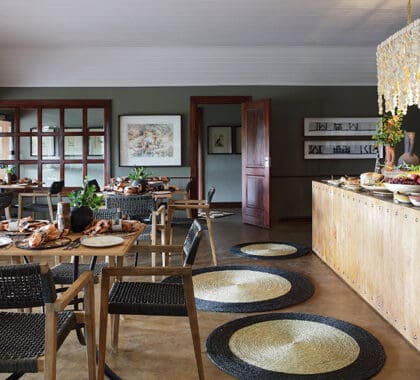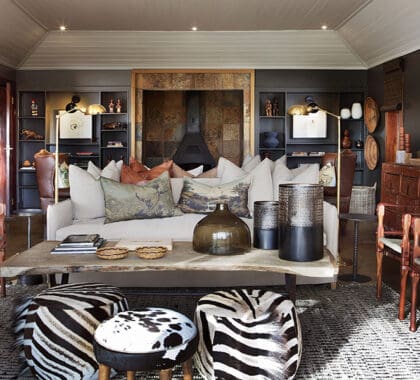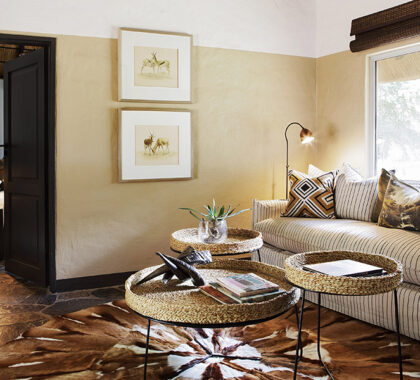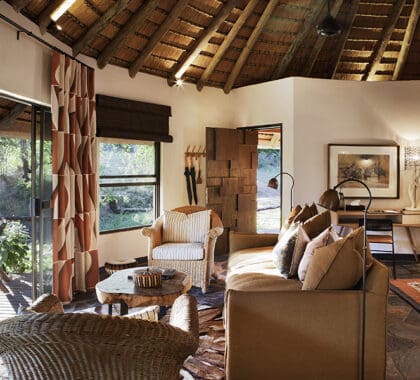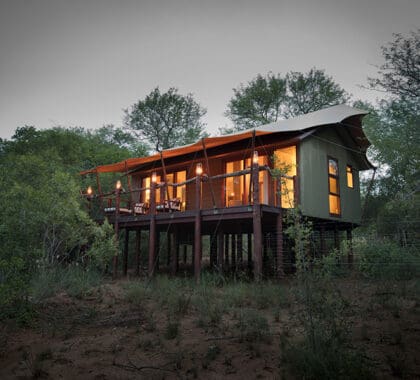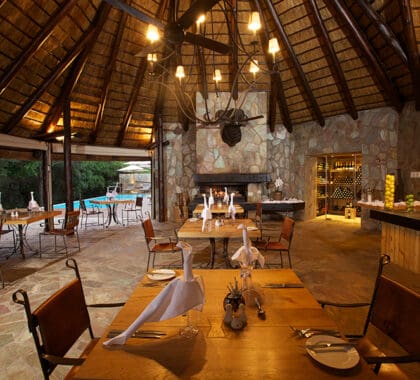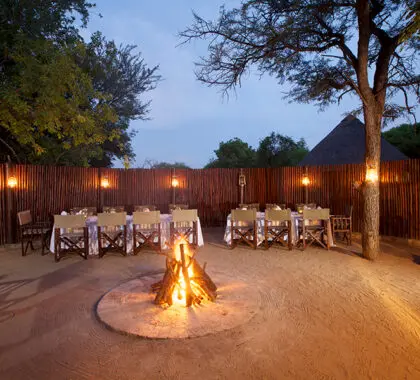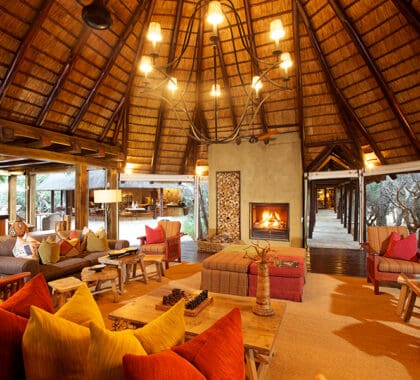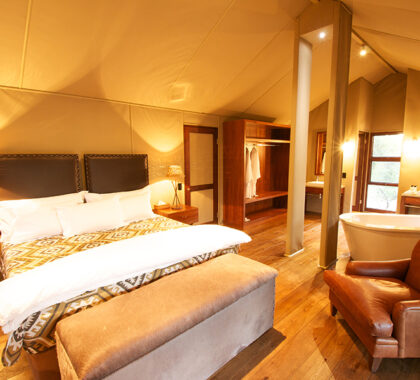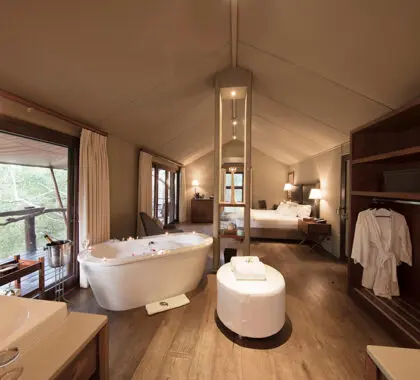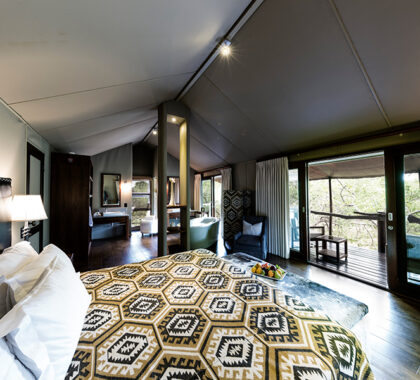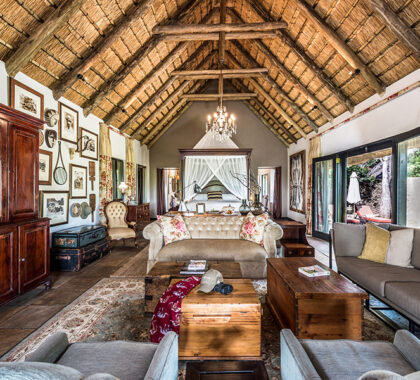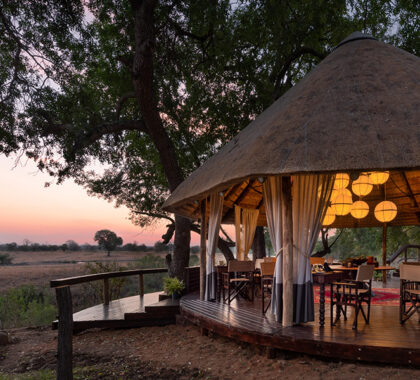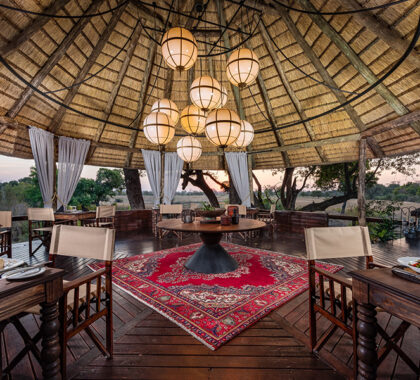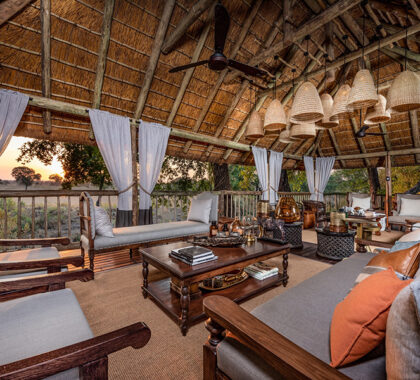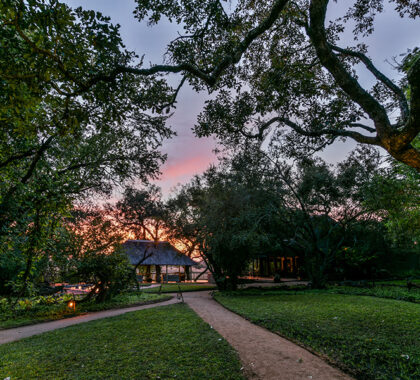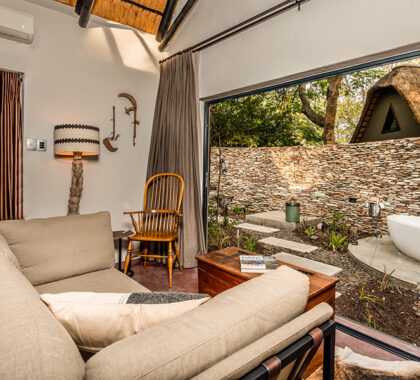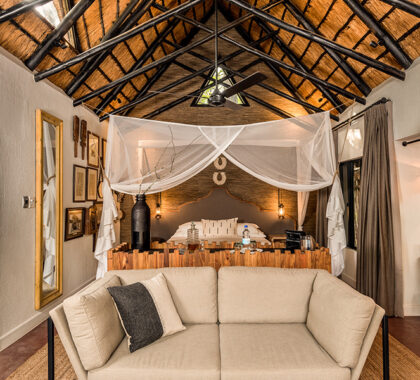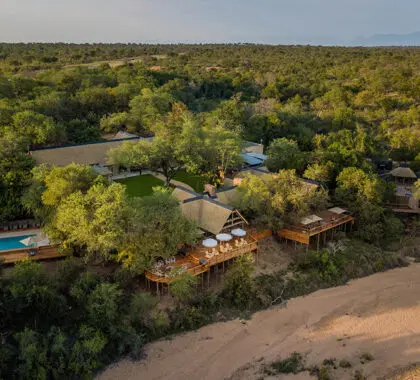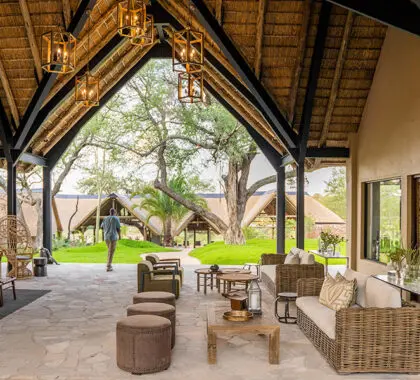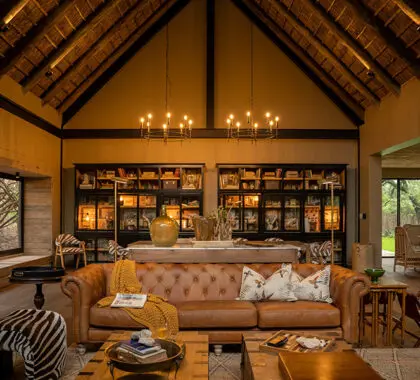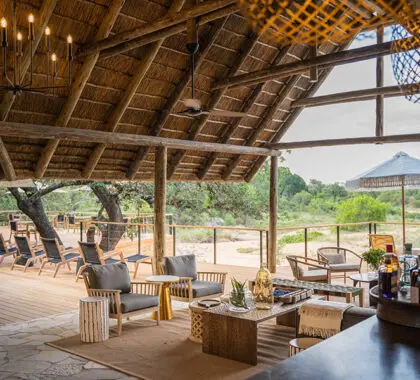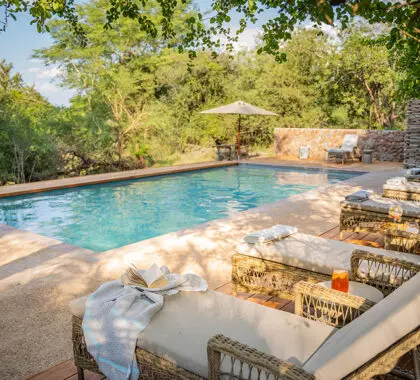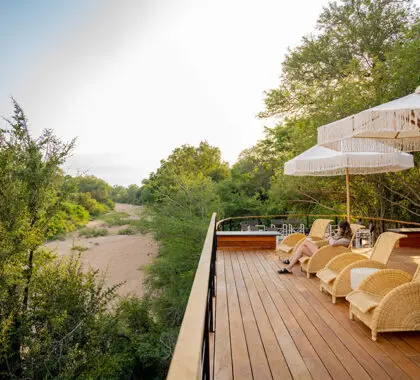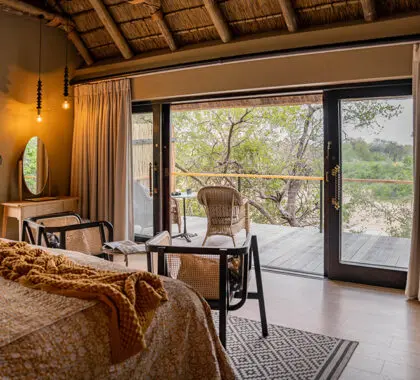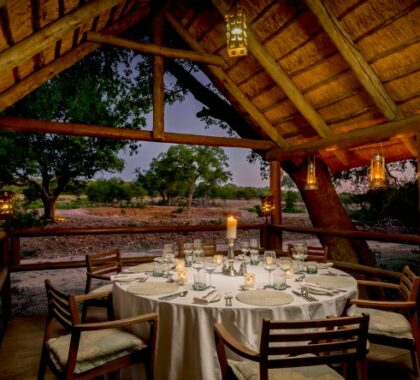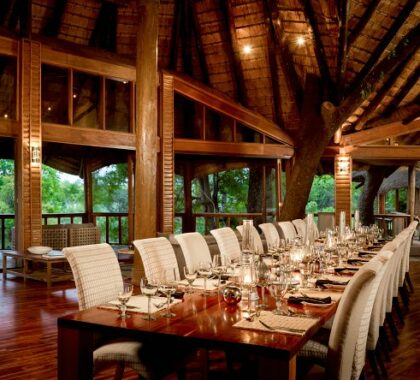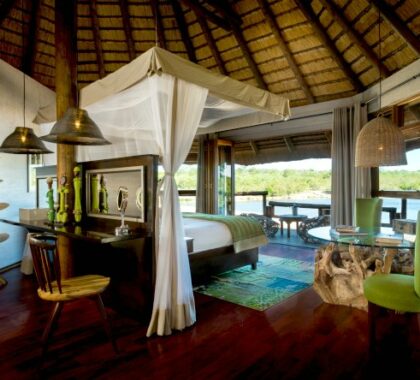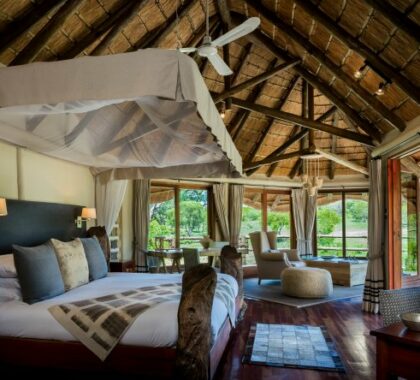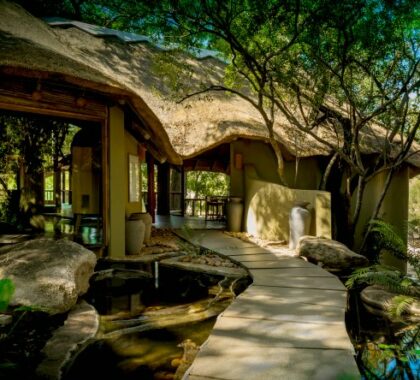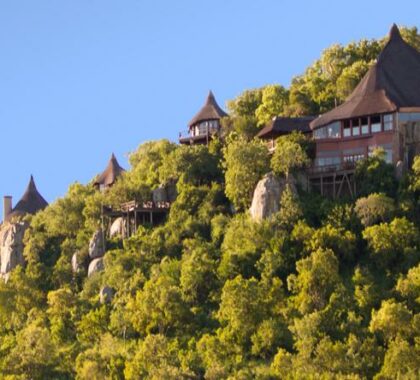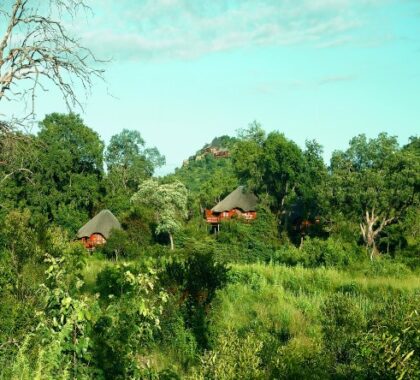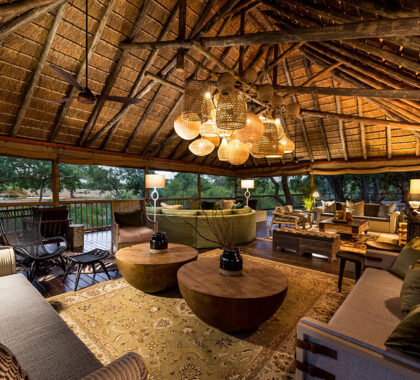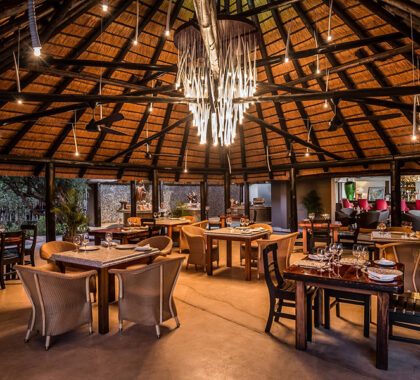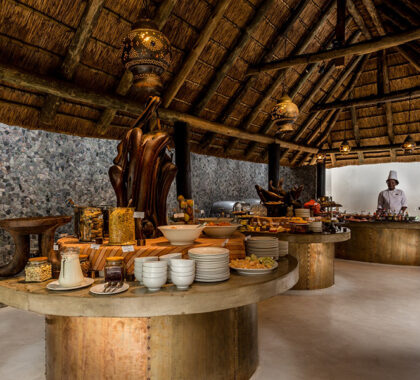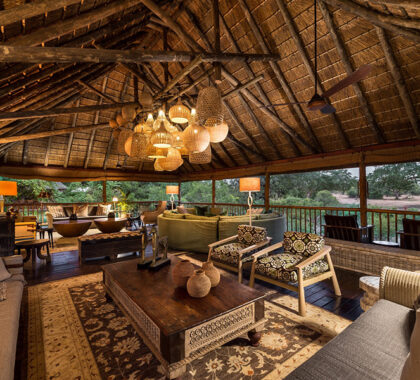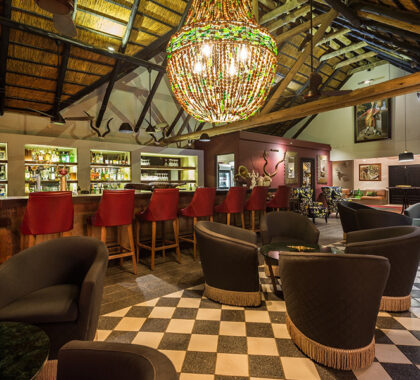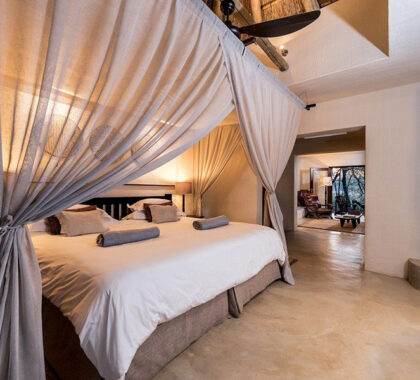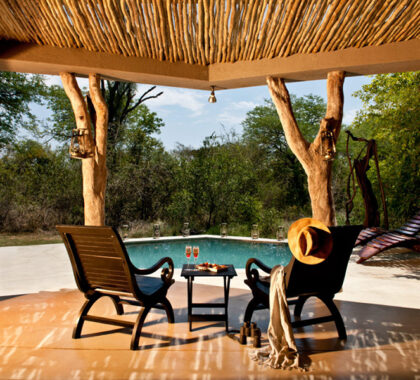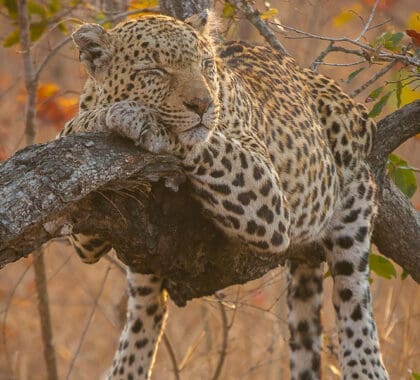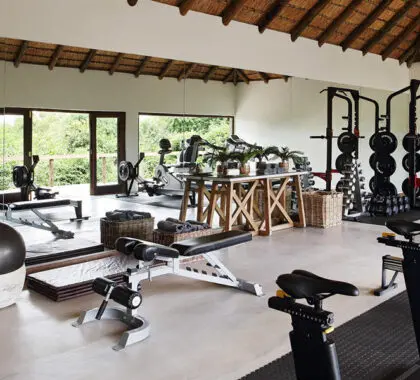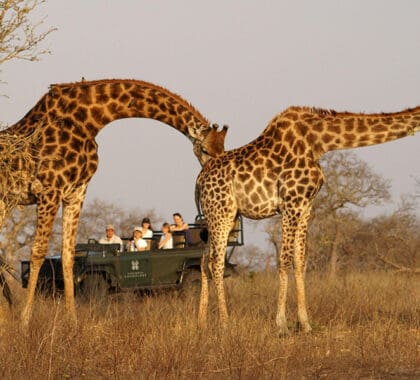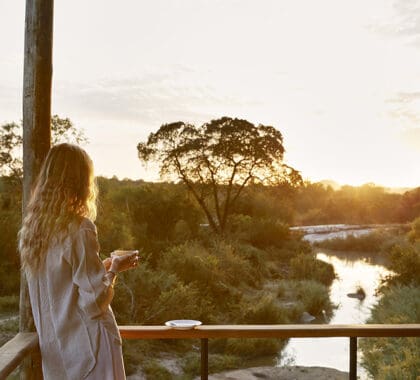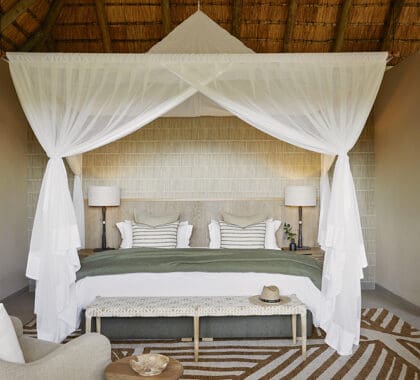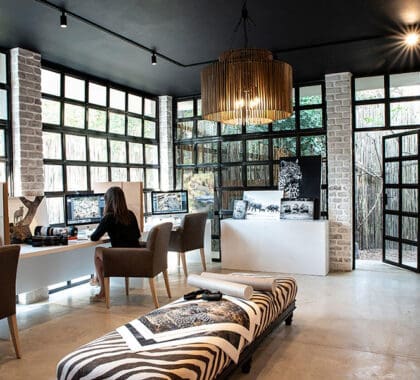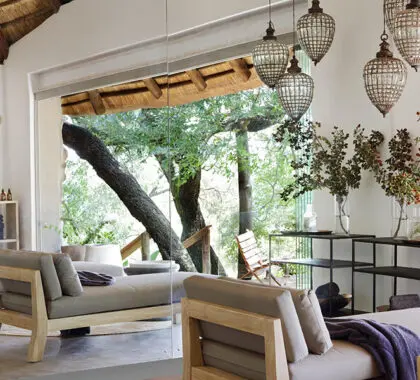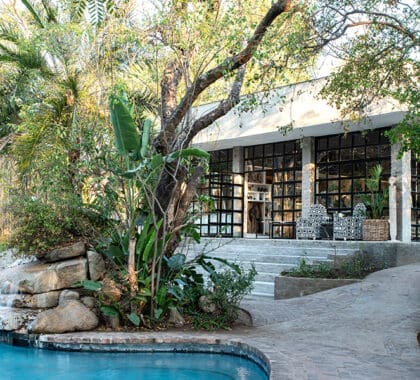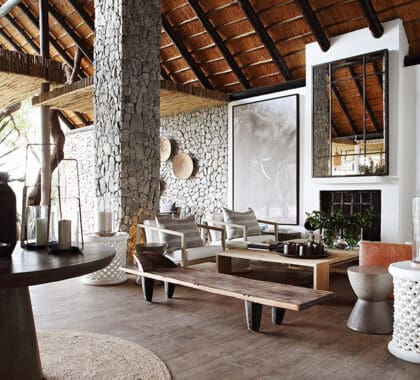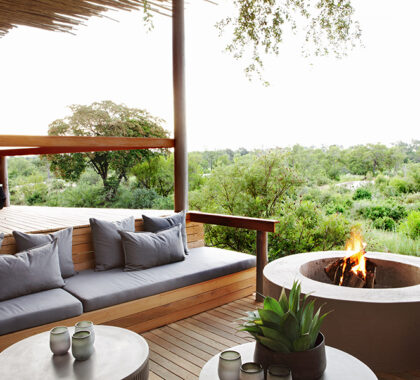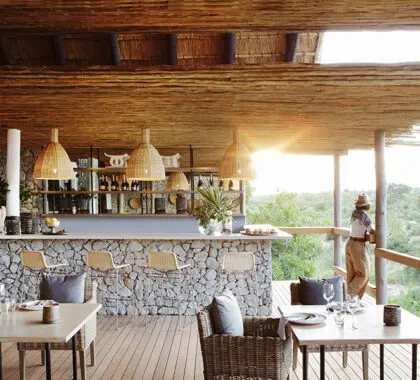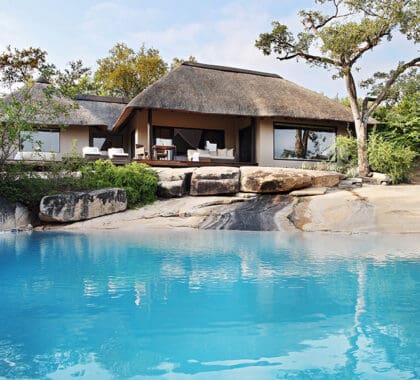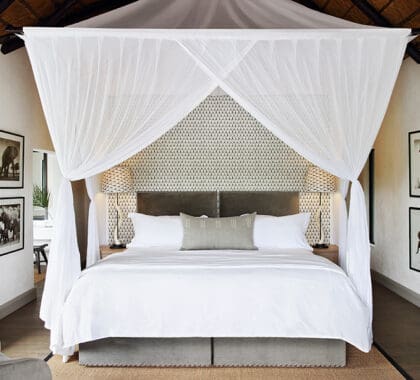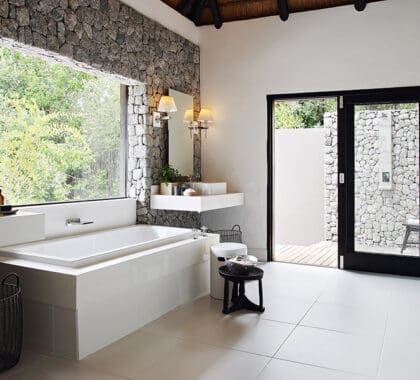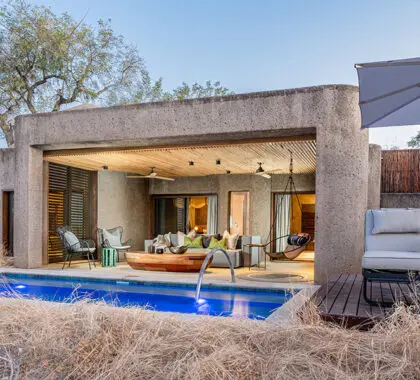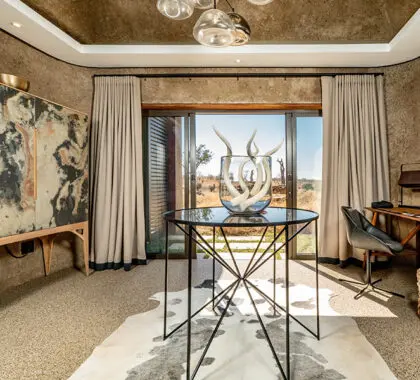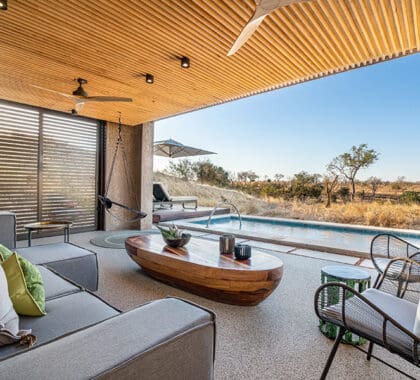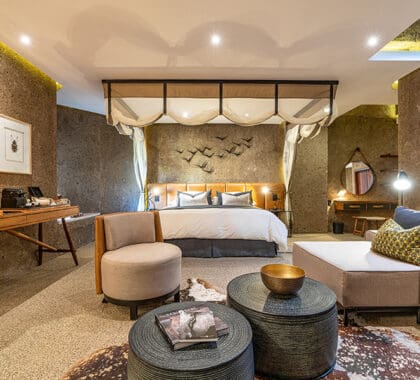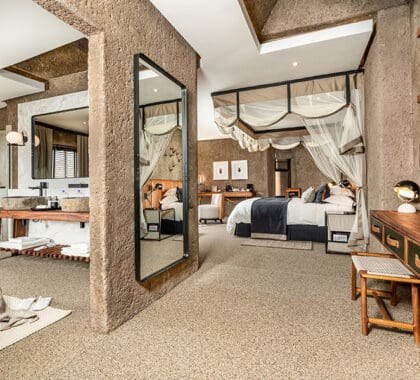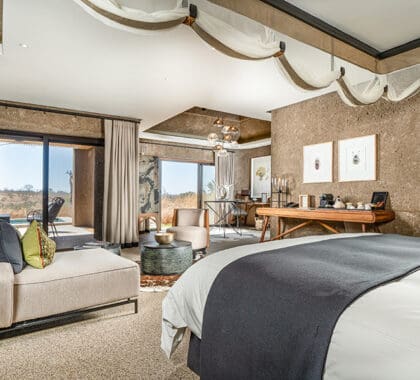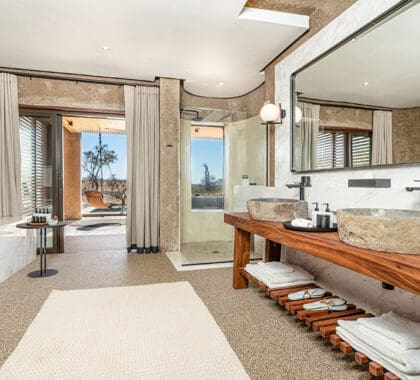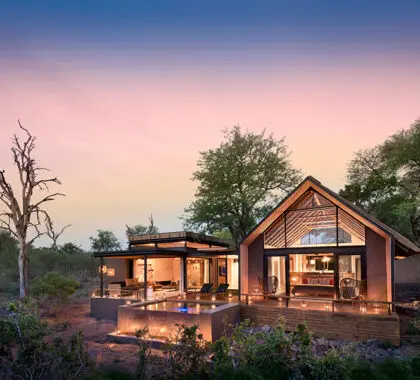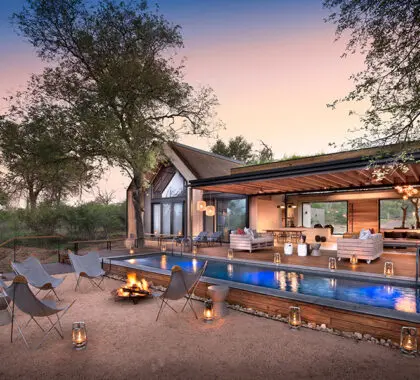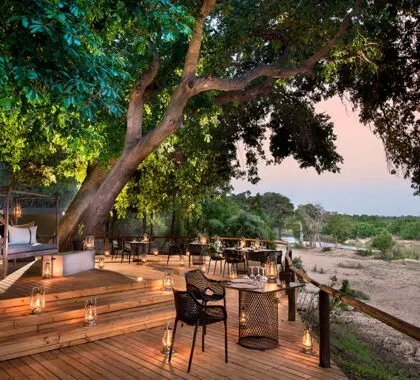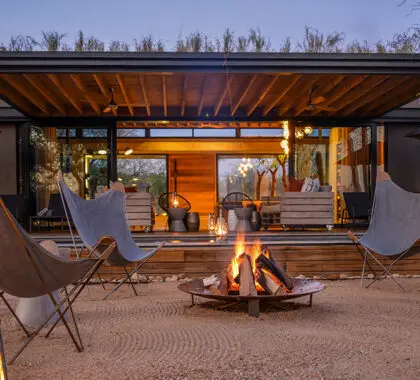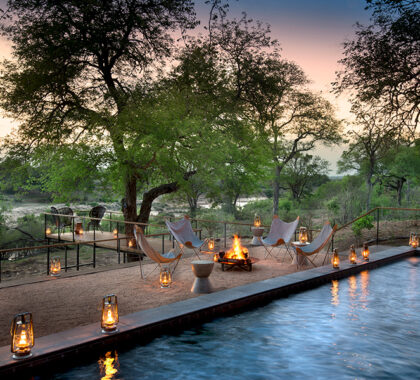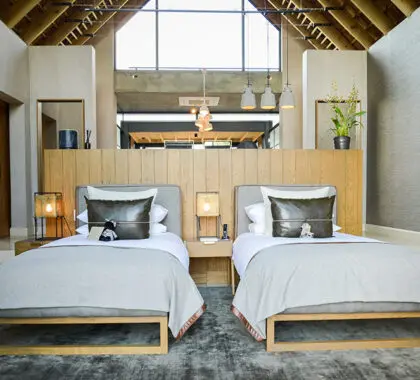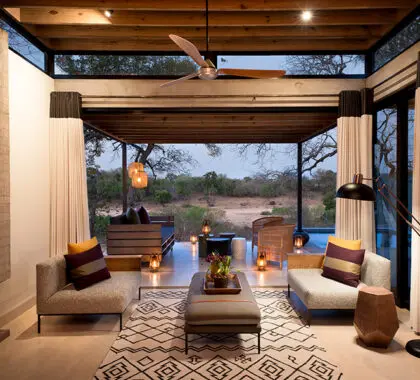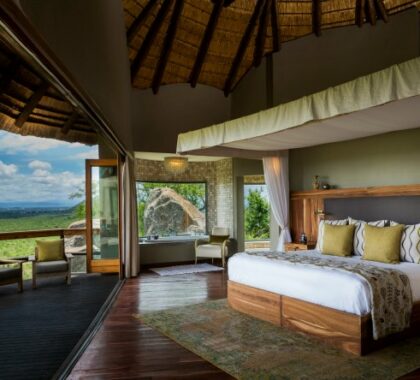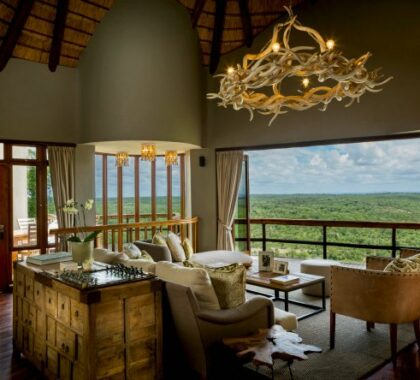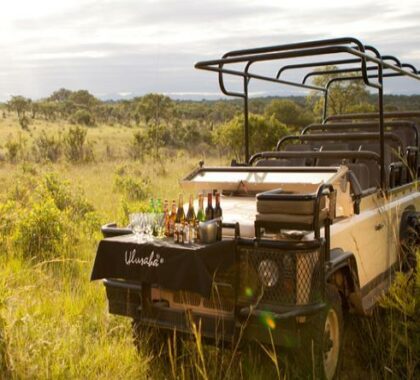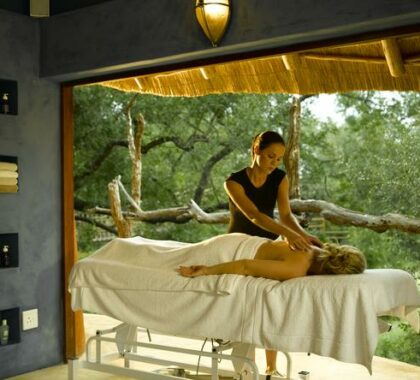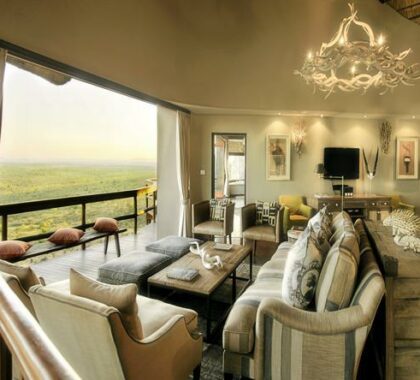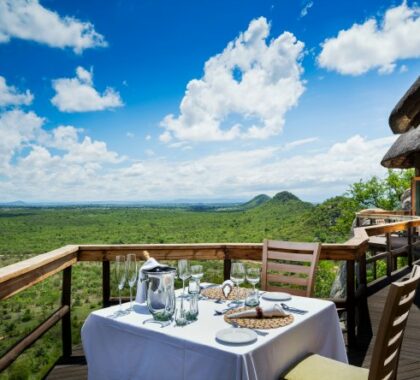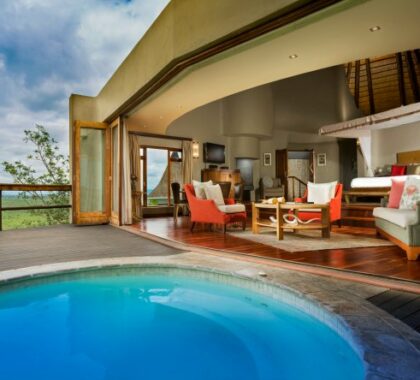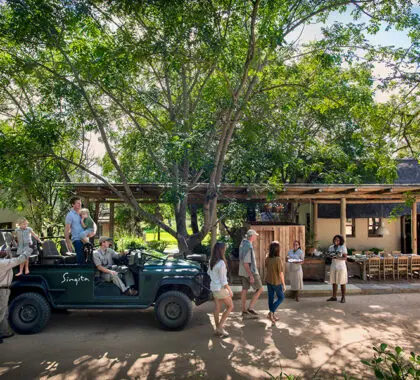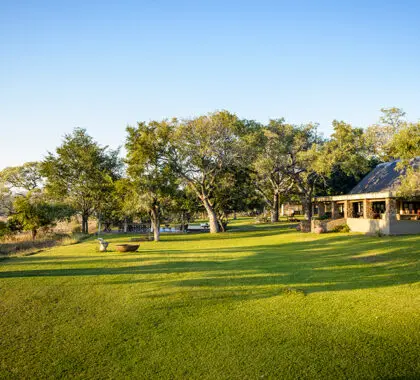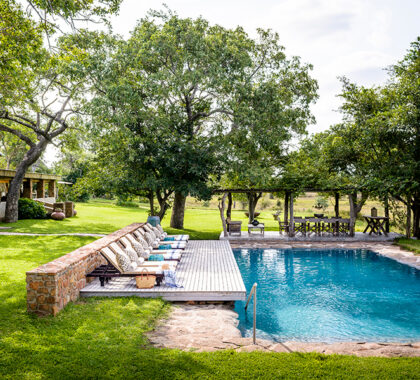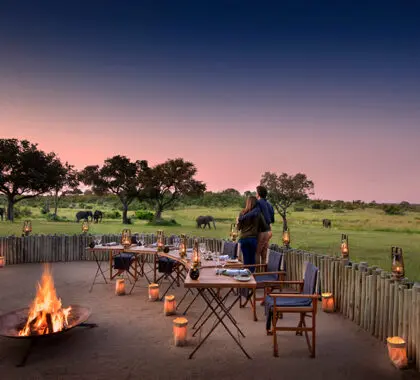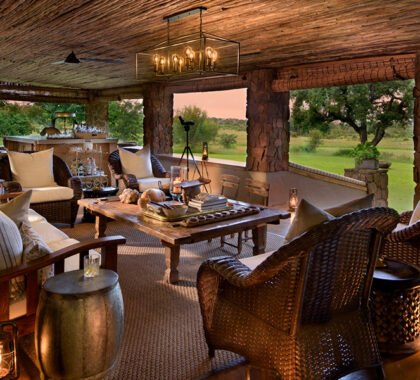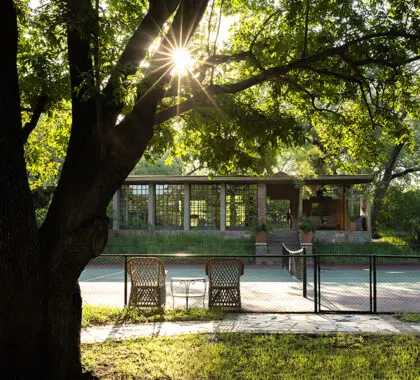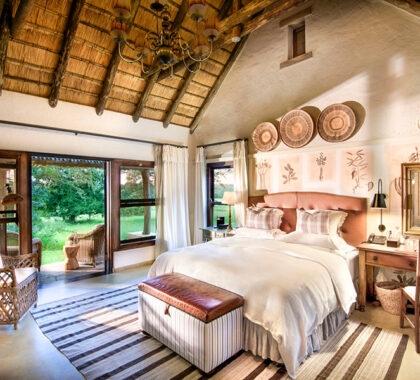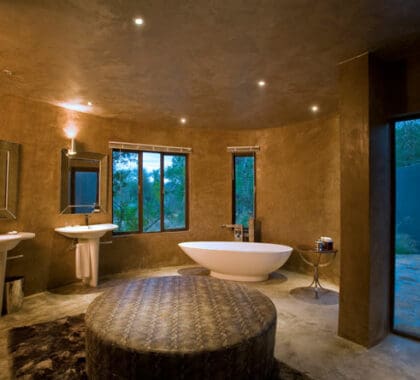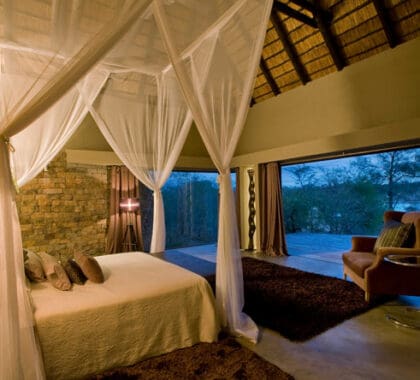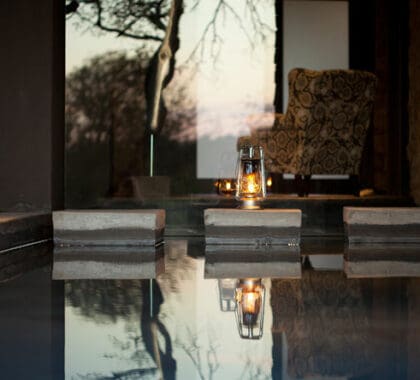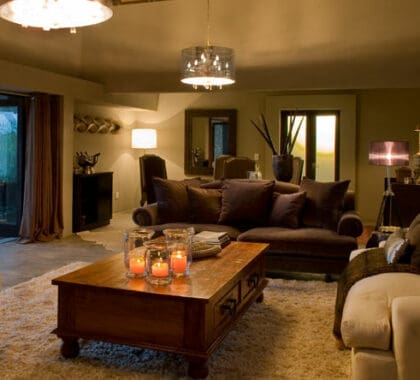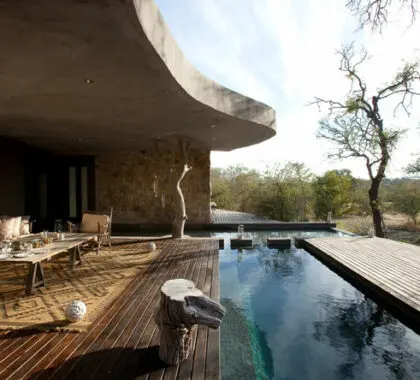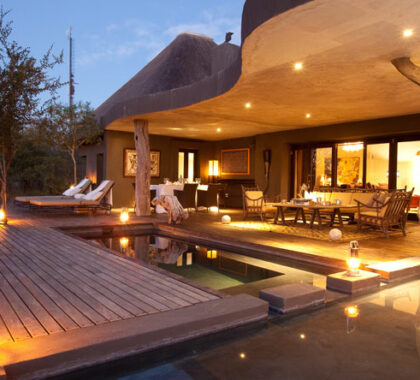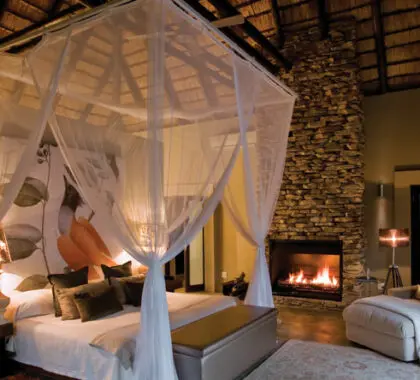Estimated reading time: 12 minutes
The Sabi Sands is a private game reserve that shares a 50-kilometre (31-mile) unfenced border with the legendary Kruger National Park in South Africa. It is known for delivering consistently rewarding Big 5 game viewing and is considered one of the best safari areas in the country. On any given day, the thousands of animals that live in the Greater Kruger area are free to wander as they have for centuries, thrilling wildlife lovers with incredible sightings and gorgeous photographs.
A veritable 'Garden of Eden', Sabi Sands Game Reserve is undoubtedly one of the brightest jewels in the Kruger crown. This unspoilt corner of South Africa has astonishing biodiversity, with over 500 bird and almost 150 mammal species calling it home. Coupled with a temperate climate, seamless access from Johannesburg and arguably the biggest collection of award-winning 'safari chic' accommodation on the planet, it's easy to see why both safari beginners and old hands flock to the Sabi Sands year after year. It’s ideal for first-timers as the game viewing is easy, the climate moderate, the distances short and the logistics convenient. But even experienced safari goers will enjoy seeing how a landscape once denuded of wildlife has been painstaking brought back to its original splendour.
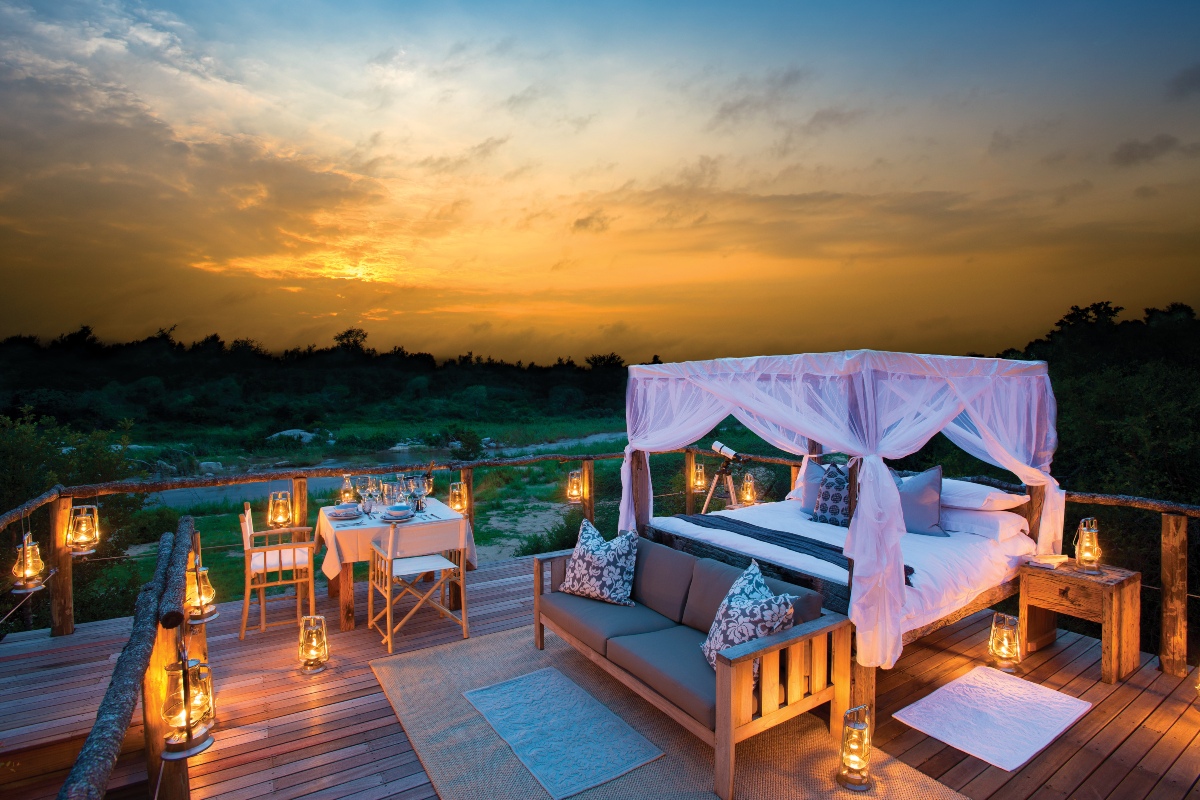
Sabi Sands offers the best of both worlds: game can come and go as it pleases but visitor numbers are very limited, giving you excellent game viewing in an uncrowded area. But what makes it so sought after and why are prime lodges in peak season booked up months in advance?
As Africa Safari Experts since 1998, we’ve tailor-made thousands of trips to this special part of South Africa – we discuss our most frequently asked questions about a safari in Sabi Sands Game Reserve:
1. How Big is Sabi Sands?
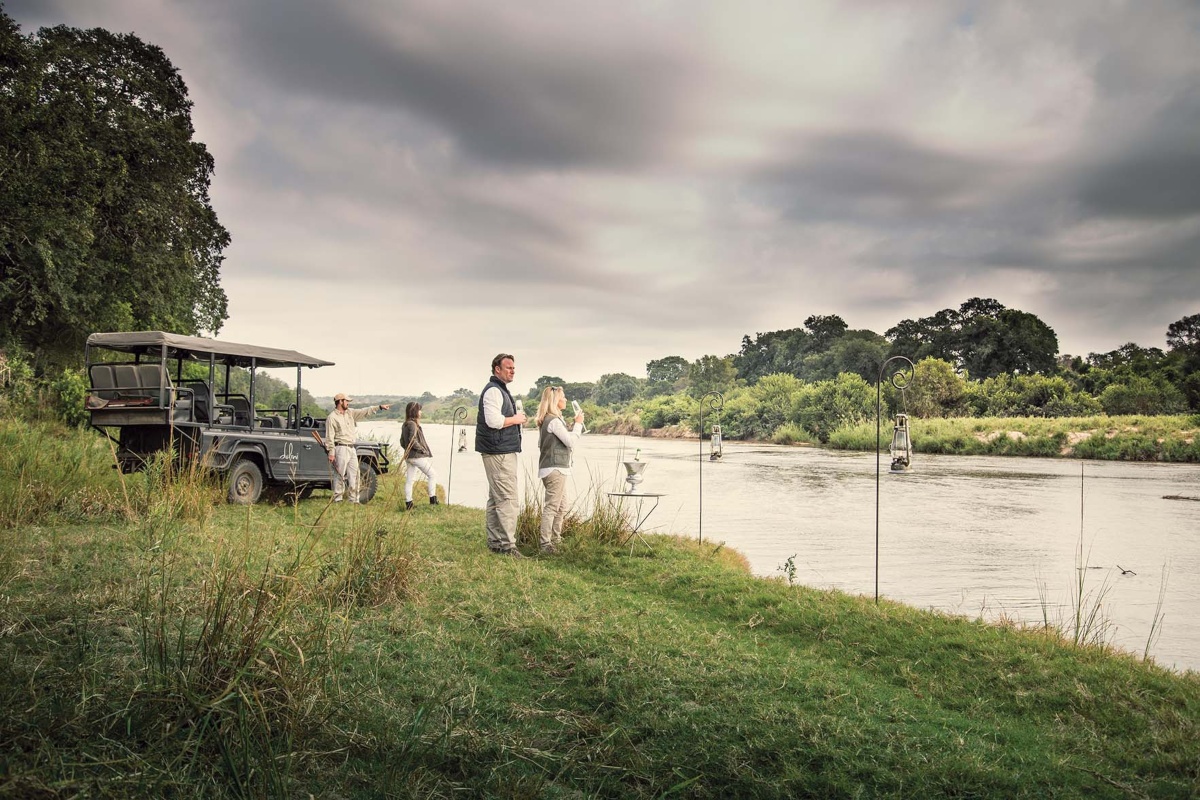
In terms of Africa’s colossal game reserves, the Sabi Sands is fairly small at 65 000 hectares (160 600 acres) – Kruger, for example, is a whopping 30 times bigger.
It is bordered by the Sabie River to the south, Kruger National Park to the east and Manyaleti Game Reserve to the north. The Sand River winds its way through the middle of the reserve; its many streams reach deep into the reserve, bringing water to wildlife. The terrain is typical of South Africa’s Lowveld area: rocky outcrops known as ‘koppies’, thicket vegetation with tall trees favoured by leopards, and occasional open savannah areas frequented by lions and cheetahs.
2. What is the Difference Between Sabi Sands and Kruger?
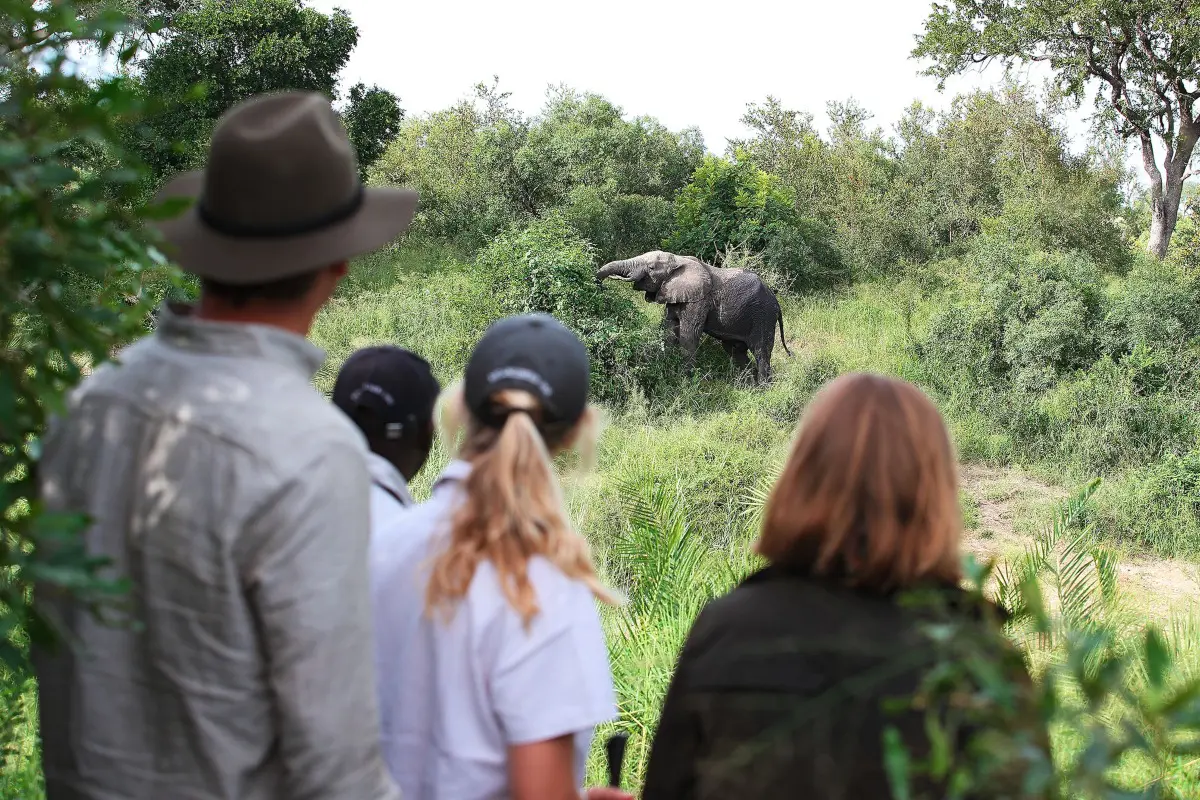
Kruger is a national park, meaning it is administered by the South African government. It is open to the public and thousands of visitors arrive every year in cars and busses to drive themselves around. Night drives and nature walks are not allowed, and accommodation is in public campsites run by the South African National Parks Board.
The Sabi Sands, on the other hand, is privately owned and managed. Only guests staying at its lodges are permitted to enter and no day visitors or self-drivers are allowed. Guides can undertake exciting safari activities like spot-lit game drives to seek out nocturnal animals, and nature walks to find smaller fauna and flora often overlooked in a vehicle.
Sabi Sands Game Reserve vs Kruger National Park
| SABI SANDS (PRIVATE RESERVE) |
KRUGER NATIONAL PARK (PUBLIC) |
||||
|---|---|---|---|---|---|
| Self-drive with Rental Car | No | Yes | |||
| Guided Game Drives | Yes | Yes (with national rangers) | |||
| Private Game Drives | Yes | No | |||
| Guided Walking | Yes | No | |||
| Night Drives | Yes | No | |||
| Star Beds | Yes | No | |||
| Private Pools | Yes | No | |||
| Big 5 | Yes | Yes | |||
| Self-catering | No | Yes | |||
| Off-roading | Yes | No | |||
| Can Go into National Park | Yes | Yes | |||
| Can Go into Private Reserves | Yes | No | |||
| Public Camping | No | Yes | |||
| Vehicle Limit at Sightings | Yes | No | |||
| Tour Buses | No | Yes | |||
| Shoestring Backpacker Budget | No | Yes | |||
| Access to Northern Sector | No | Yes | |||
| Access to Southern Sector | Yes | Yes |
3. Will We Have the Reserve to Ourselves?
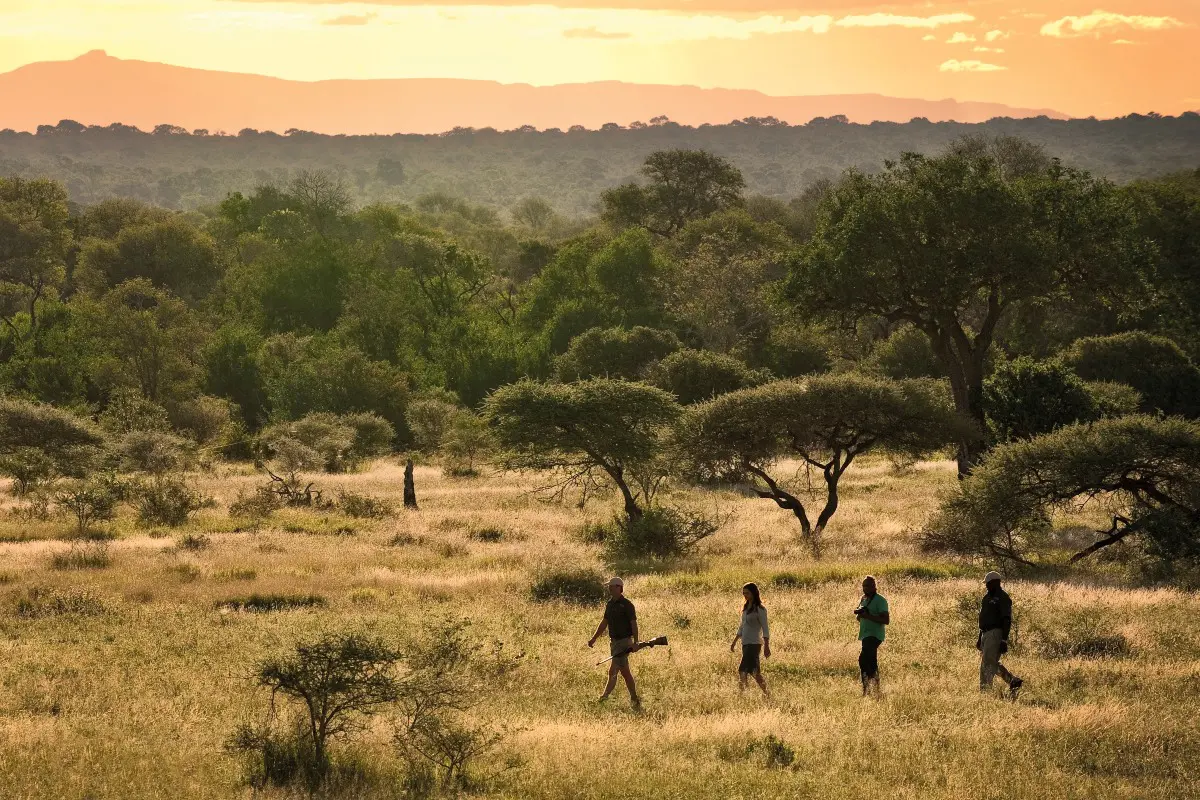
The Sabi Sands is ‘broken up’ into several parcels of land that are used by top safari operators – prestigious brands like Singita, Londolozi, Sabi Sabi and Ulusaba all have several lodges here. Some lodges cooperate with each other and allow each other to traverse ‘their’ land to get to special animal sightings or lookout points.
One of the few parts of the Sabi Sands that is considered really ‘private’ is MalaMala – no other lodges’ vehicles are allowed into MalaMala’s areas.
You will thus share most of the reserve with your fellow private safari-goers.
4. Will We See Other Vehicles?
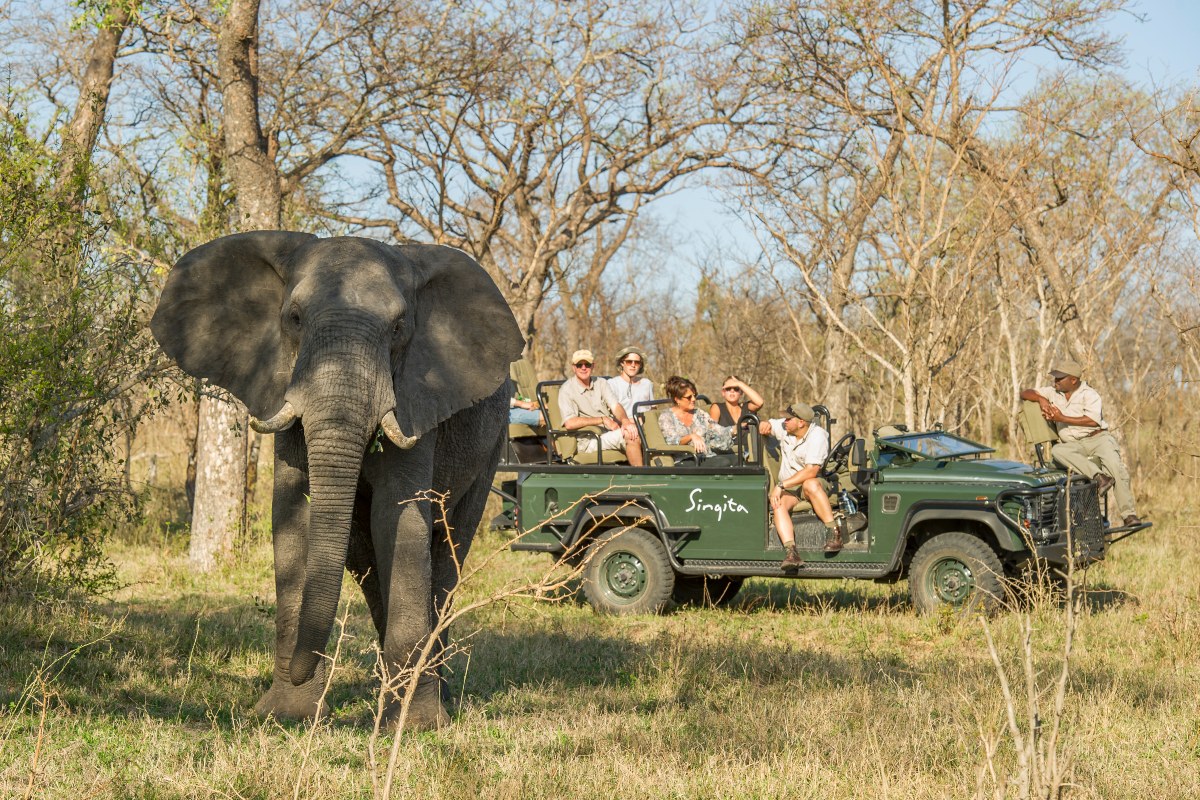
There are nearly 30 lodges in a relatively small area so crossing paths with another game-drive 4×4 is almost inevitable and you will likely have other safari lovers at sightings, especially during the midyear high or peak season, or if it is a very unusual sighting like wild dogs or a kill.
The Sabi Sands’ intimate size is actually an advantage: it makes game easier to find because you don’t have to travel very long distances.
You will probably see other vehicles (these can include delivery trucks and tractors used for bush management) unless you are staying in an exclusive-use area like MalaMala – which has only three lodges in a massive area all to itself:
Rattray's on Mala Mala
Activities Travellers Enjoyed
MalaMala Main Camp
Activities Travellers Enjoyed
5. Which Animals Will We See?
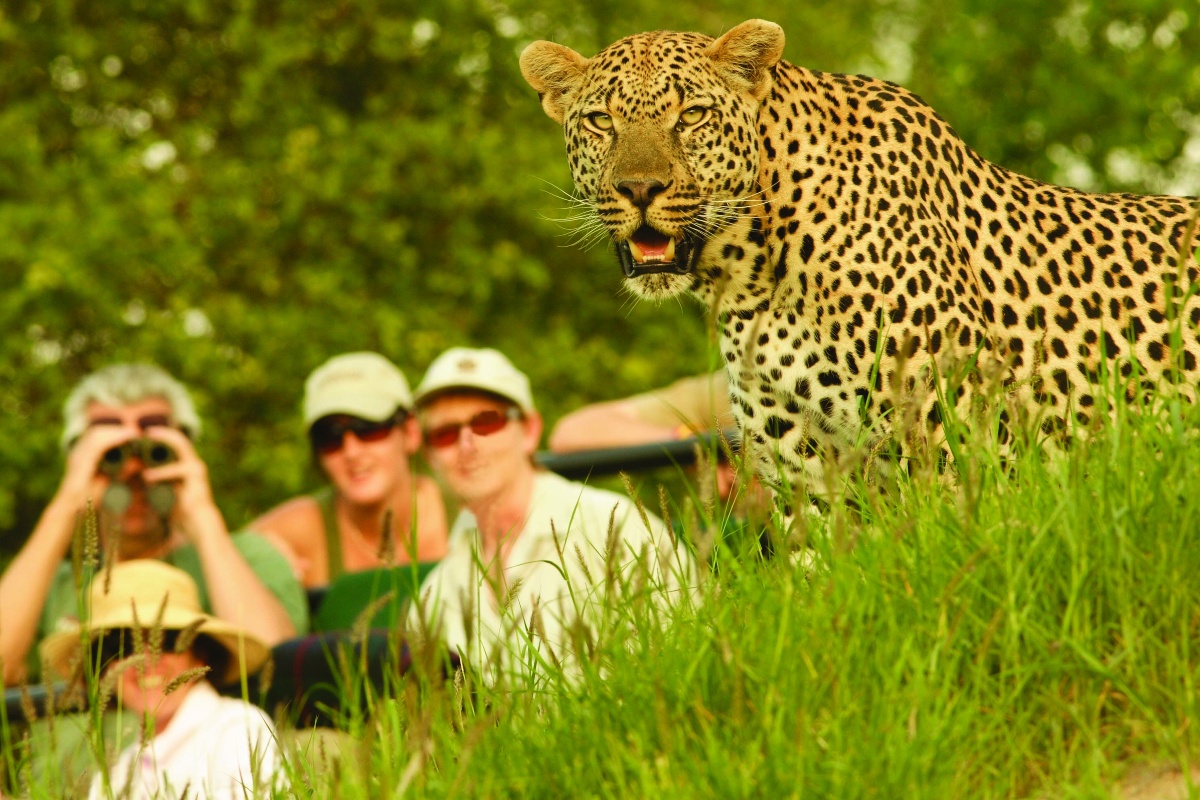

Endangered species have been slowly reintroduced over decades to the area. Today the Greater Kruger is home to almost 150 mammal species (including all of the Big 5 – elephant, lion, leopard, buffalo and rhino); over 500 recorded types of birds; and a whopping 336 species of trees. This is a birding hotspot with curiously named species like widow finches, buntings, cisticolas, mannikins, wydahs and eremomelas. The Southern Ground Hornbill Project has been doing very successful conservation work here.
The vegetation provides a haven for white rhino, reedbuck, cheetah, eland, sable antelope, nyala and hyena. The MalaMala area is especially noted for wild dogs, while all of the Sabi Sands is known for prolific leopard sightings – you’re likely to see leopard on almost all your game drives. In general, it’s not uncommon for you to spot all of the Big 5 in one day in the Sabi Sands.
6. How Long Should We Spend in Sabi Sands?
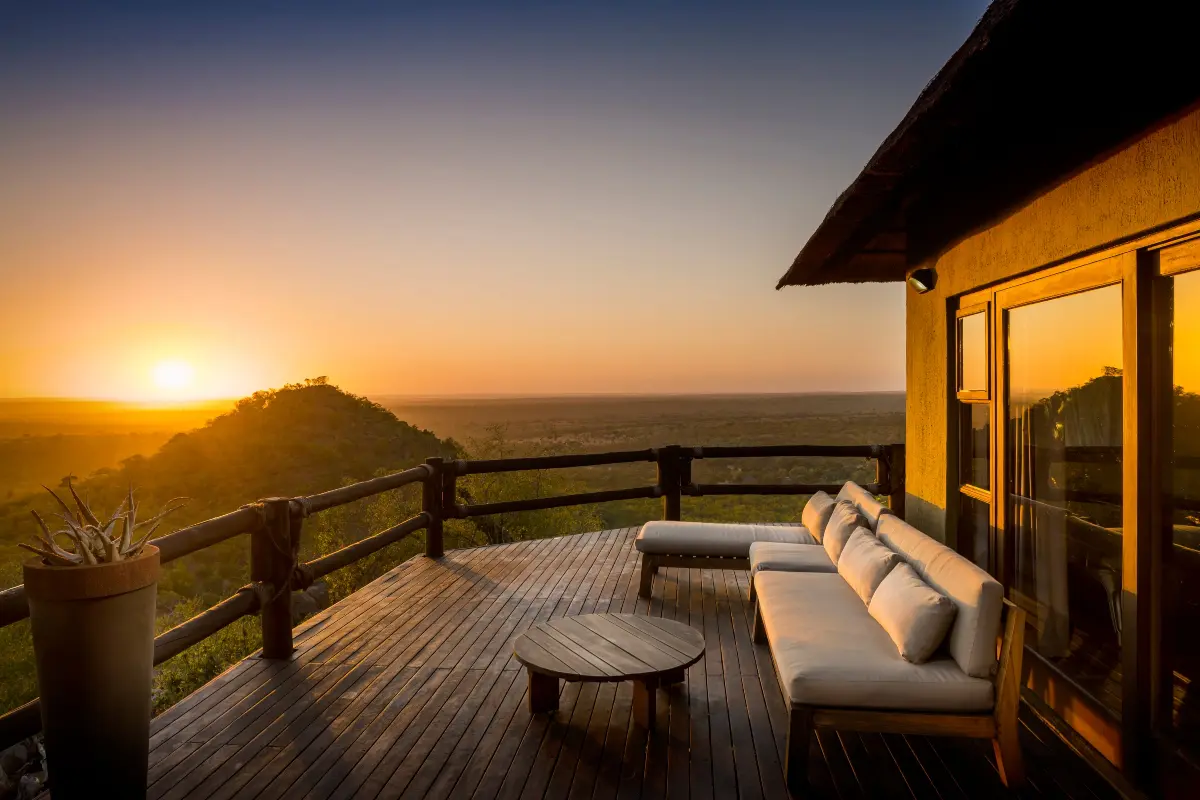

The ideal minimum stay is three nights: this gives you two full days in the reserve so you can go on a minimum of four game drives (twice daily: in the morning and evening). Depending on what time you arrive and leave, you may also be able to fit in another evening when you arrive and morning drive before you depart, making for six in total.
Remember that even though leopard and rhino sightings may be prolific, they are never guaranteed so the more drives you can go on, the better. If you spend two nights, this gives you only one full day to explore the area and you may not see every animal on your list or be able to fully appreciate how beautiful it is.
If you have longer than three nights to spend, then consider moving lodges so you can go on drives in different areas of the Sabi Sands to increase your game viewing chances. Bear in mind that you will not be able to drive across the whole reserve to get to your new lodge because of all the traversing rights: you will likely drive out of the gate and re-enter at a point closest to your new accommodation, meaning you will pay gate fees again. Transfers are often arranged to handle these logistics for you.
7. How Do We Get There?
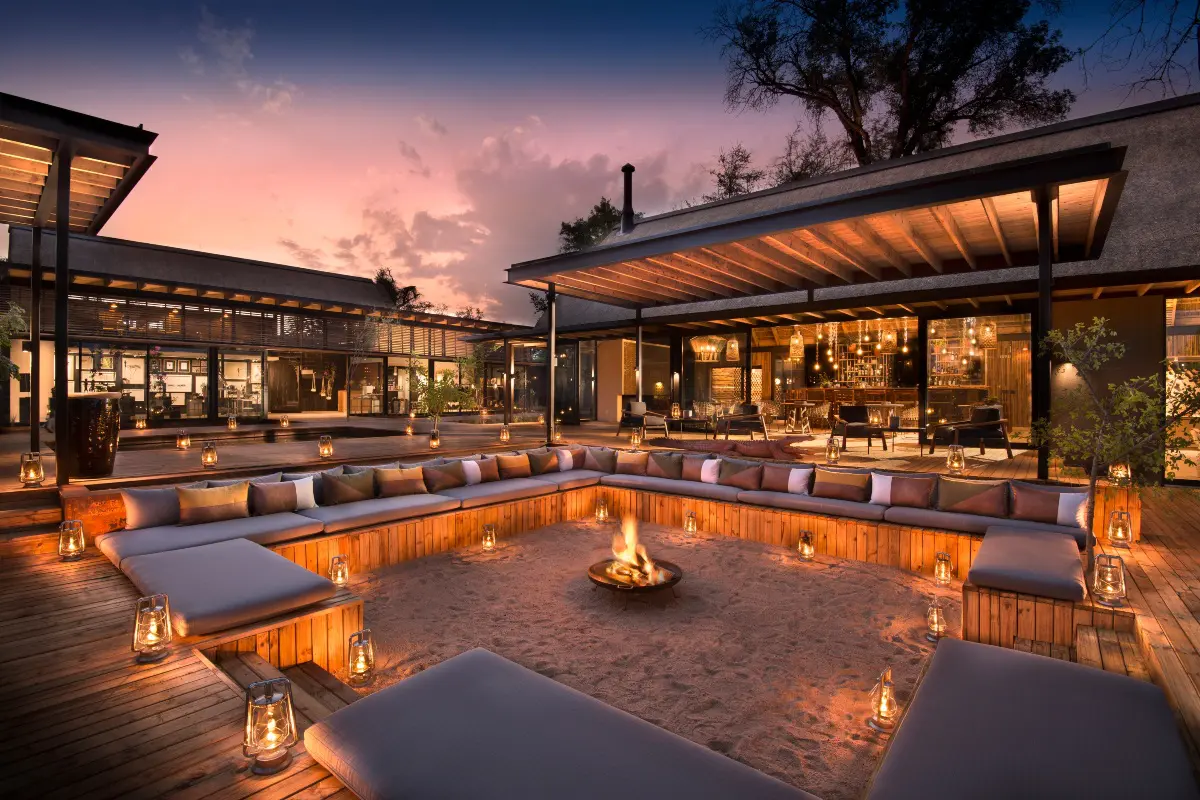

It is very easy to fly to the Sabi Sands: there are regular flights to Hoedspruit in the north; Skukuza in the south; and to Kruger-Mpumalanga International Airport from Cape Town, Johannesburg, Victoria Falls and Mozambique.
It is also possible to drive from Johannesburg – we can arrange a rental car or a private driver-guide for you. This will take at least seven hours so unless you have plenty of time to spare, driving will cut significantly into your ‘safari time’. Flying is far more convenient, less tiring and gives you more time in the reserve. Some lodges, like Chitwa Chitwa, Ulusaba, Dulini, Sabi Sabi, Londolozi and MalaMala have their own airstrips where light aircraft can land.
8. How Does Sabi Sands Compare to Other Game Reserves in the Area?
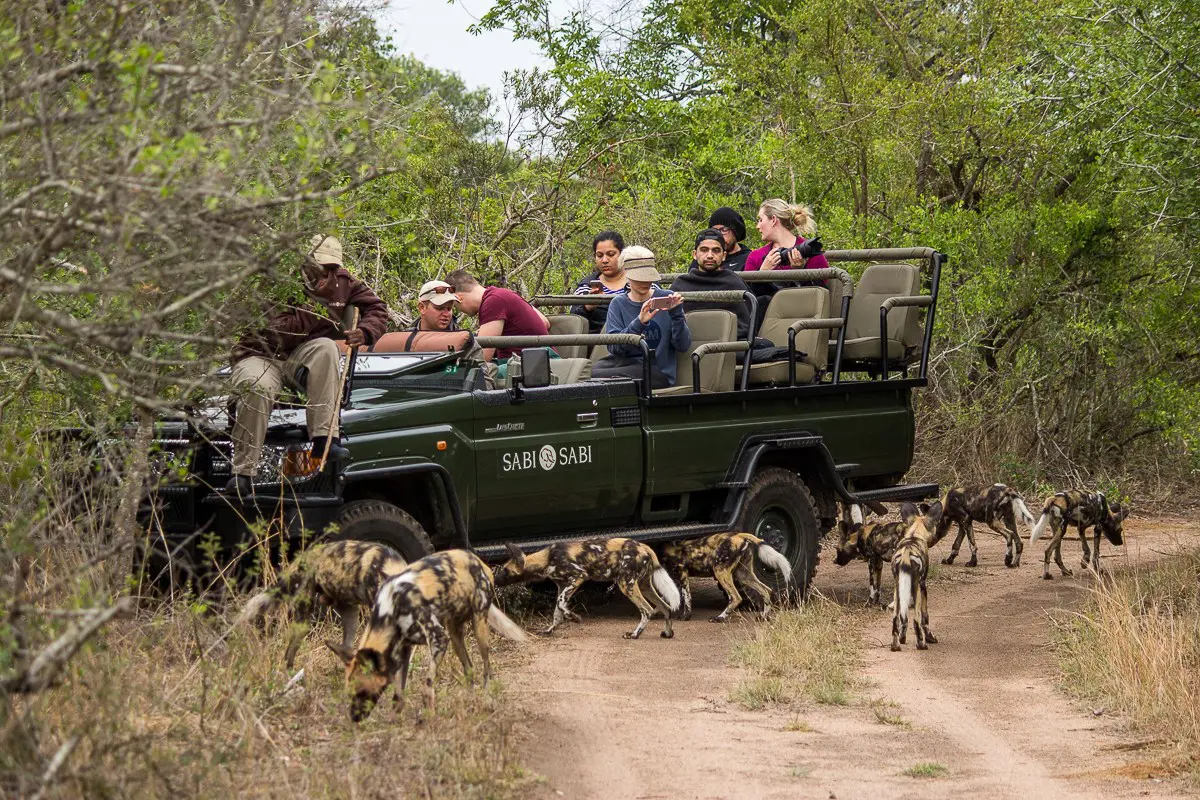

There are several other private game reserves in the area like Timbavati, Thornybush, Kapama, Selati, Klaserie and Manyaleti. The vegetation and climate are obviously the same, but the density of game may vary depending on the wildlife-management practices of each individual reserve.
Broadly speaking, the Sabi Sands is considered more exclusive and the others more accessible – but remember that price is only one element of a rewarding safari.
Sabi Sands is in very high demand, especially during peak season, so advance booking is encouraged. From about June to September, the dry winter months provide spectacular game viewing in cooler conditions. The vegetation is not as lush and thick compared to the wetter summer months – which makes game much easier to see – and animals do not move far from water sources. If you want to visit during this time, please do not leave your booking until the last minute.
Kapama Buffalo Camp
Activities Travellers Enjoyed
Sabi Sabi Selati Lodge
Activities Travellers Enjoyed
Thornybush Game Lodge
Activities Travellers Enjoyed
9. What is the Accommodation Like?
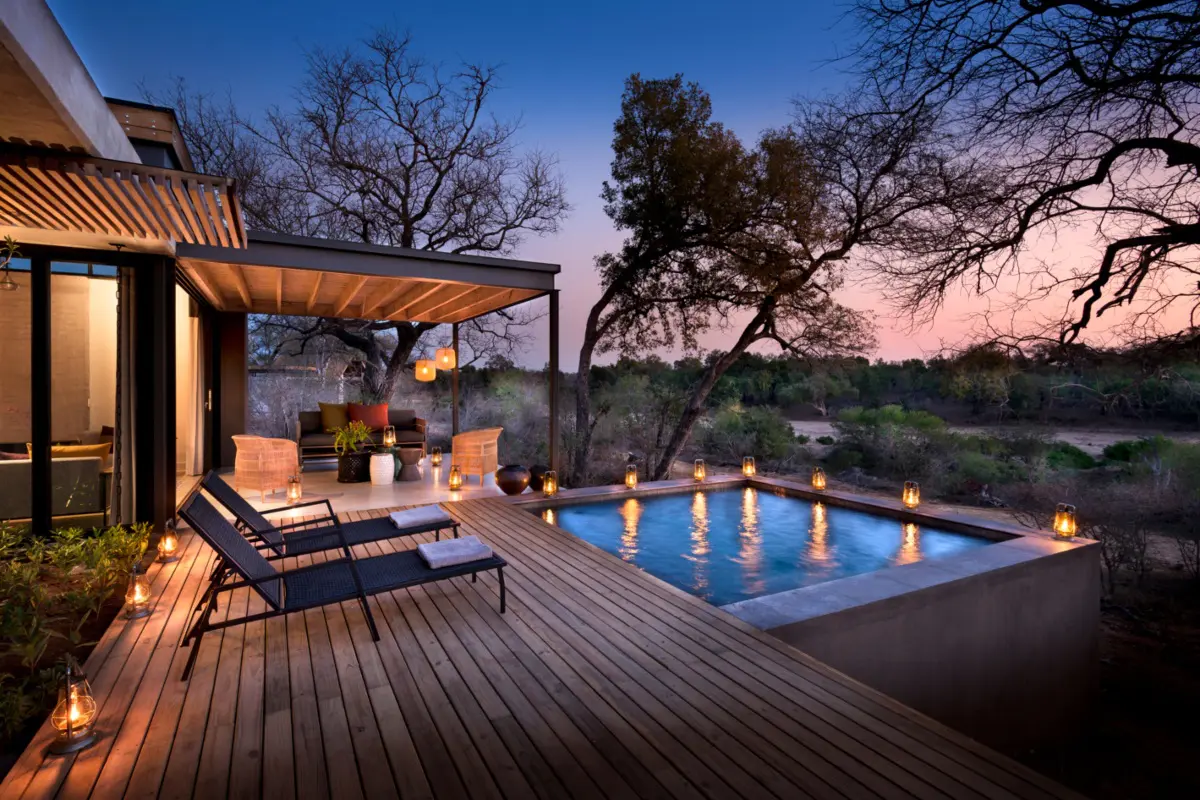

The Sabi Sands provides a premium safari experience and accommodation is top-notch from award-winning service, restaurant-quality food and wine, lush spas, and some of the best-trained guides in Africa. Our Africa Safari Experts have extensive first-hand experience in the Sabi Sands and will match your preferences and budget to carefully selected lodges and activities.
Here are some of our suggestions:
For Families With Young Children
Ulusaba Safari Lodge
Activities Travellers Enjoyed
Sabi Sabi Bush Lodge
Activities Travellers Enjoyed
Londolozi Founders Camp
Activities Travellers Enjoyed
For Honeymooners and Romantics
Londolozi Private Granite Suites
Activities Travellers Enjoyed
Sabi Sabi Earth Lodge
Activities Travellers Enjoyed
For Groups or Large Families
Singita Castleton, Lion Sands Ivory Lodge, Ulusaba Cliff Lodge and the Chitwa House all provide sensational ‘villa-style’ accommodation that is more like staying in a private residence than a lodge. This gives you a more private and tailor-made experience: private chefs will discuss menus with you, and you will often have your own dedicated guide and vehicle instead of having to share these with other guests.
Ulusaba Cliff Lodge
Activities Travellers Enjoyed
Singita Castleton
Activities Travellers Enjoyed
The Chitwa House
Activities Travellers Enjoyed
10. We Want to Go – How Long in Advance Should We Book?
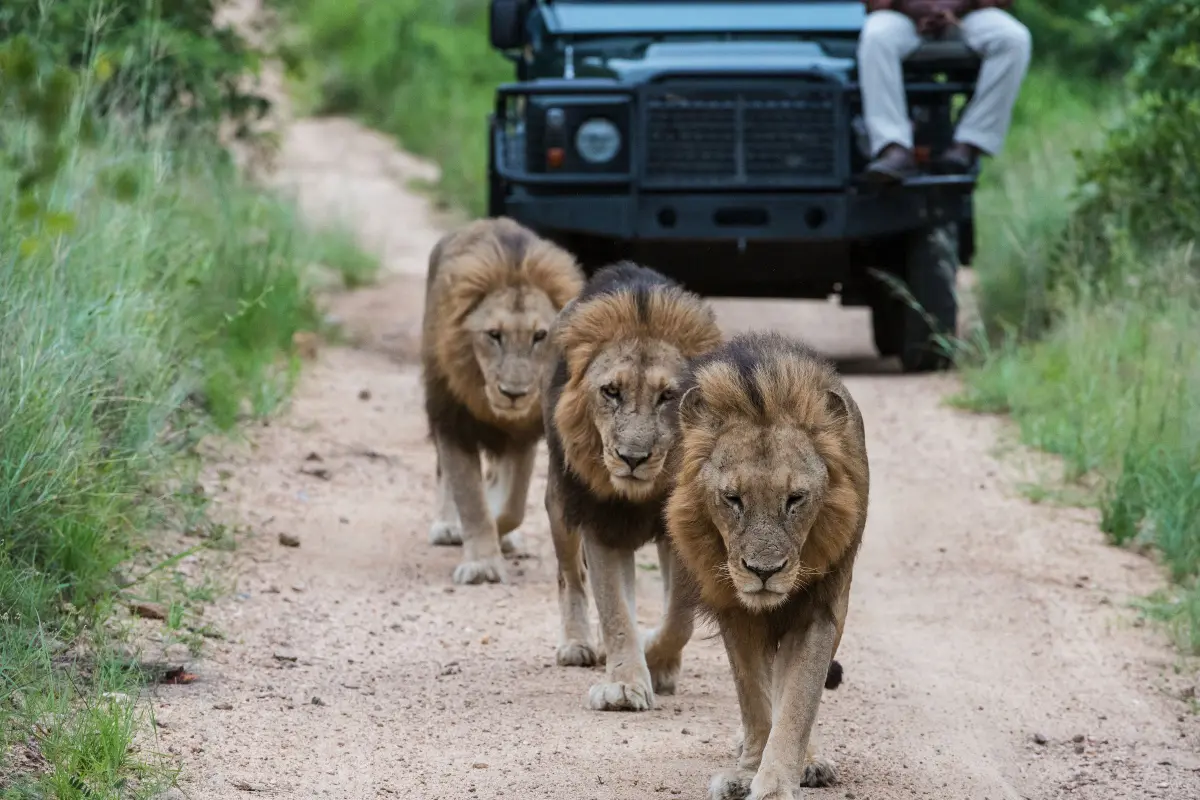

The safari high season runs from about June to August, which coincides with major events like the South African midyear school holidays and the northern hemisphere summer vacation. We advise booking as far in advance as you can if you wish to travel to Sabi Sands at this time of year – six to twelve months is ideal to get your first choice of accommodation.
The rest of the year remains popular, but you can probably book a few weeks to three months in advance unless you want to go on safari over the December festive season. Then the 6-month rule of thumb kicks in again.
If you suddenly find out you can travel very shortly – lucky you! – then it is still worth your while to enquire about accommodation in Sabi Sands as our Africa Safari Experts have the latest cancellations and room availabilities at their fingertips and may be able to help you.
